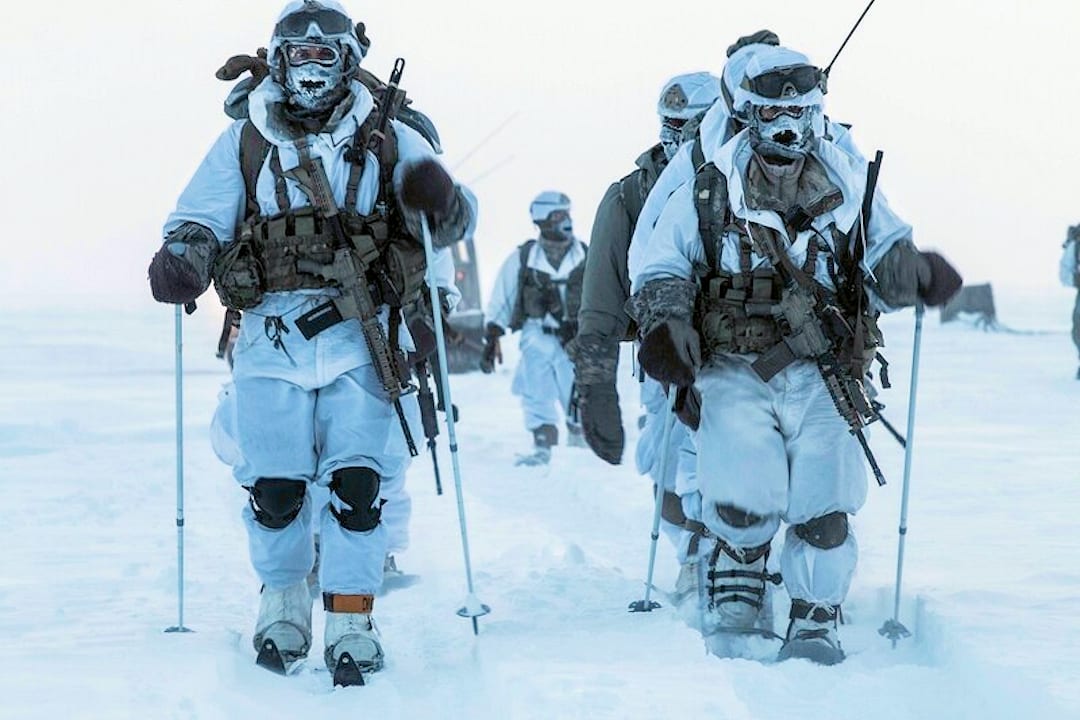
With the climatic changes that are currently taking place in the Arctic, the situation of the Arctic states with regard to parts of their national territory and their Arctic policies has also changed. As a result, numerous new strategies have been published in recent months. A central aspect of this was security policy. Now the US Army has also published its future Arctic strategy. And this at a time when relations with Russia are running towards freezing point.
The new strategy of the US Army was published under the title “Regaining Arctic Dominance”. In it, the US Army lists how it intends to prepare for future operations in the Arctic, which areas of the Army are to be strengthened and expanded. In doing so, it is not only targeting operations in its own area of the Arctic, namely Alaska, but is pursuing a pan-Arctic strategy. “There is significant variationst among areas within the Arctic. A unit accustomed and optimized for Alaska operations might have some difficulties if suddenly deployed to the European Arctic.,” the documentation states. As an end state, the U.S. Army wants to be able to ” rapidly generate and project Multi-Domain forces globally that are specifically trained, equipped, and sustained to fight, win and survive in extreme cold weather and rugged mountainous conditions over extended periods.”

To achieve this goal, strategists have listed five points that are essential to the goal. This includes strengthening and expanding its own armed forces to make them fit for operations under Arctic conditions. In addition to new materials and systems, however, physical and, above all, psychological training are also part of the process. Because in order to be able to function longer under the harsh conditions in the Arctic, the strategists consider the mental condition of the troop units to be enormously important. Therefore, attention is also paid to the families of the soldiers and their welfare. But cooperation with partners and important allies worldwide is also to be strengthened again. Indigenous people and organizations in Alaska play an essential role in this process.
“The Arctic is an opportunity to rapidly employ the speed, range and convergence of cutting-edge technologies being developed for Multi-Domain Operations to strengthen our deterrence capabilities in the region”
General James McConville, Chief of Staff US Army
In general, the strategy focuses on strengthening Alaska, the only Arctic territory in the USA. Here, in addition to the military units, a multi-domain task force headquarters will be established, from where the Arctic units will be partially trained and deployed for their operations. However, this would require a reassessment of the existing structures within the army, the paper says. Overall, however, the Army is convinced that the new strategy can make up for the ground lost in the Arctic in recent years. But experts see major hurdles that still need to be overcome. Speaking to Radio Canada International, Troy Bouffard, an expert at the University of Alaska Fairbanks, explains that the army must first create a qualification program to certify extreme cold weather and also overcome the problem of mobility on Arctic terrain. Russia is much further along than the US in both of these things.

Every army needs an enemy. In the case of the US, the security threat cited is Russia’s and China’s plans in the Arctic. In particular, Russia’s military buildup along the northern coast, its new submarines and weapons systems and their testing, which extend to the border with neighboring states, are seen by the U.S. Army as an “effective offensive threat,” although the Russian buildup is described in the strategy “primarily for territorial defense purposes and protection of Russia’s second-strike capabilities.” Nevertheless, Russia is seen as a security threat. And this not only from the army, but also from the navy and the air force, which have already published their strategy papers. And apparently they are not wrong in their assessment of Russia. Because relations between the US and Russia have fallen towards freezing point since yesterday, Wednesday. This, after US intelligence agencies accused Russia and President Putin of meddling in the US elections, while US President Joe Biden publicly called his Russian counterpart a “murderer” and said he would pay for his interference. As a result, Russia has ordered its ambassador home from the US to reassess relations with the US. This could mean the U.S. Army could implement its plans and strategy more quickly than previously thought. But it certainly needs to step on the gas if it is to achieve its goal of “regaining Arctic dominance.”
Dr Michael Wenger, PolarJournal
Link to the pdf version of the US Army strategy paper.
More on the subject:





